I happen to agree that hip-shoulder separation is pretty critical to velocity, just as it is in hitting for power (e.g. Ken Griffey, Jr.). Perhaps having good arm action is largely (but not completely) a byproduct of good core action.
ljs
IMO there is some truth to this. Arm actions are difficult to originally teach, and dangerous to change.
quote:Perhaps having good arm action is largely (but not completely) a byproduct of good core action.
IMO there is some truth to this. Arm actions are difficult to originally teach, and dangerous to change.
quote:Originally posted by tsirhc:
What I really wish is that people could post differing opinions and the thread continue forward. However, as soon as someone states something that many of you disagree with, the whole thread gets taken over by this kind of stupidity. Why not let TPG say what he wants and you say what your theories are? I don't think for one moment that you are all that concerned for the "poor little boys" who may be reading this thread and who will hurt themselves because of TPG's advice. For the love God...
AMEN MY BROTHA!!!
quote:Originally posted by thepainguy:quote:Originally posted by Chameleon:
YOUR ADVISE IS HURTING KIDS.
First, all you are doing is filling up threads with personal attacks.
Second, how exactly am I hurting kids? By teaching them to throw like Greg Maddux?
Third, it's "advice" not "advise". You advise someone by giving them advice. It's a small and subtle, but important, difference.
lmao!!!
quote:Originally posted by thepainguy:quote:Originally posted by Chameleon:
UNBELIEVABLY BAD ADVICE...
...that doesn't get moderated by the one who really knows this stuff.
Please explain exactly why this is such bad advice.
Are you suggesting that hip/shoulder separation is inconsequential? If so, then why do you see it in pretty much every ML pitcher?
For example...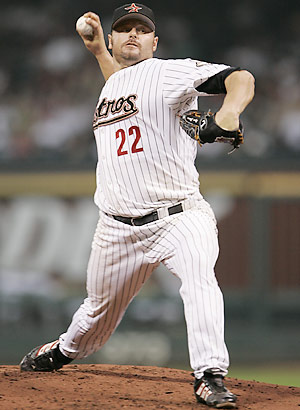
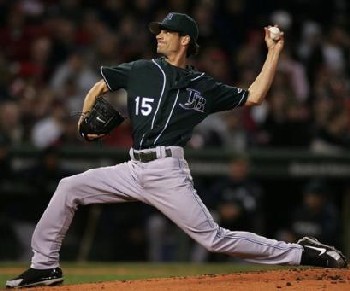
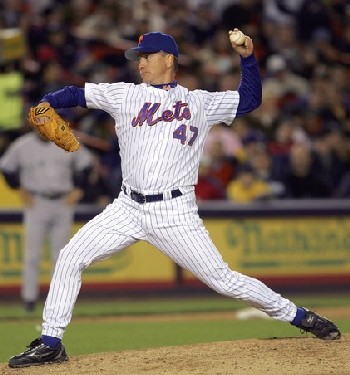
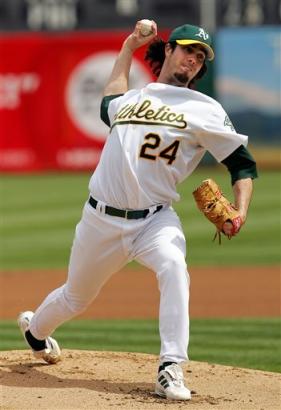

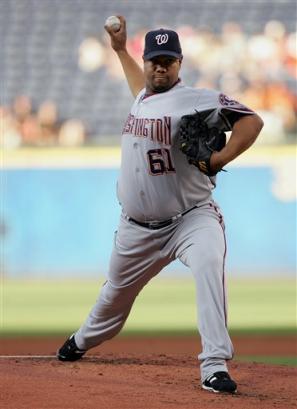
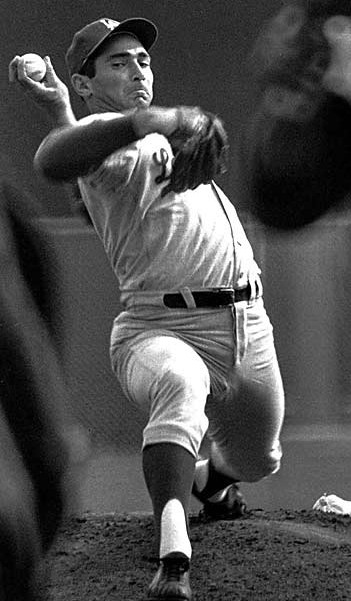
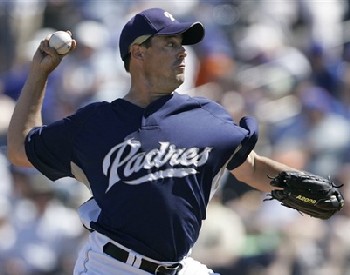


I have collected hundreds of examples like these...
- Hips Rotating Before Shoulders
It's not bad advice to try to immulate(sp?) people.....it's bad advice to try teach something you cannot teach....Like make sure your belly button is facing the catcher a split second before your torso delivers the baseball.......insane....
the problem I see with people who love to spew advice which they think is golden is that they think you can teach mechanical things based on slowing down video footage or teaching frame by frame.....like "hey do you see this...well do this".....that doesn't work.....you can immulate.... just not from film frame by frame........Please leave it to people who have played/taught/had success at a higher level.......do it for a living then I will listen to you.......don't read me back what you have read and never done yourself.....
Kid, I think you'll gain the most velocity by running as quickly as you can.. away from the loonies in the house! 
quote:Originally posted by longjsilver:
Perhaps having good arm action is largely (but not completely) a byproduct of good core action.
Now there's some good insight. Unfortunately, it's buried in this nasty thread much like a piece of corn nestled into a smelly turd. How about a courtesy flush?
THANK YOU CAP_N!!!quote:Originally posted by cap_n:There is so much more than to having good separation ... Timing is a major factor. Tempo is a major factor. Knowing the purpose of loading to unload, and an efficient way of loading to unload are major factors. Then being able to recognize and teach an efficient tempo matched with the timing of loading to unload is another factor.
I've mentioned this to Chris in the past that hip/shoulder separation alone will not ensure higher velocities. Timing and tempo are crucial in the load/unload process. Turn those hip, pause, then throw just doesn't do it Chris.
…….but you did say forget any program that focuses on arm action. Powerful statement….and an unreasonable statement.quote:by TPG…..Forget any program that focuses on arm action.
I'm not saying that arm action isn't relevant. It is. But it isn't all or even most of the deal when it comes to a high-level throw.
You fail to mention just how the power is generated by the core or the stride. And how are you able to quantify the percentages of power….80% core, the majority of the remainder from the stride? You’re suggesting that the arm is along for the ride when in reality the arm is starting from virtually 0mph at the ball/hand apex and accelerating around/forward to 95+ mph in less than .1 of a sec. It’s absolutely necessary to develop an efficient arm action that will be able to withstand that kind of ballistic movement and also be able to transfer the loading and unloading of the mid and lower torso. Therefore, it’s absolutely necessary to be on a program that focuses on arm action. Arm action leading up to the ball leaving the hand is the last event to take place concerning ball velocity……it should be the first thing addressed when training to throw hard.quote:by TPG…..In a high-level throw, the vast majority (e.g. 80%) of a pitcher's power is generated by the core and the majority of the remainder is generated by the stride. The arm is important because it funnels the force to the hand and thus the ball.
...but in order to funnel the movements of the larger, slower lower torso components, the arm action which includes the all of the connective muscles in the shoulder, chest and back (scap too) and how and when those components are loaded to unload, needs to be efficient in order to be effective. These zones are all part of the arm action. If appropriate loading of the back, chest and shoulder cannot be achieved, I don’t care how efficient or how hard the core is trained, how hard or fast or far the stride is, a high velocity throw will never be achieved because of insufficient development of the arm action first. You give to much credence to the lower body, when in reality, the lower body supports, not defines, all types of arm actions. For example, do you know how to develop or modify the lower body mechanics of a thrower who prefers an arm action that yields a high arm slot? The lower body postures and mechanics need to be properly positioned, loaded and timed in order to support the ballistic movement of the arm from the ground up. When efficient loading (mechanics yielding a highly efficient type of separation) of the lower and upper torsos are achieved, then that load can be efficiently transferred up the torso and out the hand.quote:by TPG….However, the job of the arm is to FUNNEL the force rather than GENERATE the force.
As a result, IMO a good pitching program FOCUSES on the stride and the torso/core. Arm action has to be addressed, but it's a secondary consideration.
Your way of thinking to disregard how you get there, just get there in time (little emphasis on arm action, load or no load, etc.), is a detriment to those who want to throw hard. This is reminiscent of 10 years ago when someone else was trying to make a name for himself, but didn’t have all the answers to all the problems he created.
P.S.
I'm asking everyone that feels they need to rag on someone without providing substance.....please refrain. Send that person a PM.....keep it off the site.
............r-i-i-i-i-i-i-g-h-t!
To me hip/shoulder separation is a "non-teach". You don't conciously tell a kid "now...make sure you have your hips rotating before your shoulders".
This happens naturally if you have a good load/un-load sequence.
Whic as Cap_n said...loading and unloading in an efficient way and the timing of that sequence is much more critical to generating the power/momentum necessary for a high level throw.

This happens naturally if you have a good load/un-load sequence.
Whic as Cap_n said...loading and unloading in an efficient way and the timing of that sequence is much more critical to generating the power/momentum necessary for a high level throw.
To me hip/shoulder separation is a "non-teach". You don't conciously tell a kid "now...make sure you have your hips rotating before your shoulders".
This happens naturally if you have a good load/un-load sequence.
Which as Cap_n said...loading and unloading in an efficient way and the timing of that sequence is much more critical to generating the power/momentum necessary for a high level throw.

This happens naturally if you have a good load/un-load sequence.
Which as Cap_n said...loading and unloading in an efficient way and the timing of that sequence is much more critical to generating the power/momentum necessary for a high level throw.
Tim Lincecum's dad said Tim's arm was along for the ride! What I've realized is that there are many ways of delivering a pitch effectively - my guess is that we could find MLB pitchers that contradict some of the "absolutes" that are preached here. I'm not sure either that if every pitcher adopted Greg Maddox's delivery that it would ensure them of not having arm problems. I can see how someone would teach that, however.
What I do know is that 6 months ago my son was "staying back" and coming to a "balanced point." We changed to a "get the hips and momentum going to the plate" as soon as he lifted his foot off the ground. It was difficult at first but now his fastball has really jumped in velocity (6 mph) and his control is substantially better. He recently beat an undefeated team by tossing a two hitter and striking out 14 with only 1 walk. Yet, many pitchers have had success by "staying back." It just did not work for my son. BTW, he has not had any arm soreness, and I think it is because his arm is more so along for the ride.
What I do know is that 6 months ago my son was "staying back" and coming to a "balanced point." We changed to a "get the hips and momentum going to the plate" as soon as he lifted his foot off the ground. It was difficult at first but now his fastball has really jumped in velocity (6 mph) and his control is substantially better. He recently beat an undefeated team by tossing a two hitter and striking out 14 with only 1 walk. Yet, many pitchers have had success by "staying back." It just did not work for my son. BTW, he has not had any arm soreness, and I think it is because his arm is more so along for the ride.
Cap, your last post was very well stated. Well worth peoples' time to read...
With all sincerity, I appreciate your response. I also like reading your posts as well.quote:Originally posted by Texan:
Cap, your last post was very well stated. Well worth peoples' time to read...
Originally posted by PGStaff:
It is my belief that the closer this seperation takes place the more arm speed the pitcher has. Thus the more velocity!
Deemax and Chris asked so I’ll try to explain. Please understand that there could be disagreement, but this is something that I’ve actually spent a lot of time on FWIW. I call it throwing with your belly! I’m about as scientific as Beetle Bailey!
First, I believe “trying” to open up too late is better than opening up too early. While there has to be separation between when the hips open and the shoulders turn, I believe the less separation you have the faster and better the arm can work. If the hips open too early, you become nothing more than an upper body/arm thrower. If the separation can work closely together the hip turn helps the arm work.
The best drill for testing this IMO is to have the pitcher spread out in the landing position and throw from there. If the hips are already open in this position, nearly any pitcher will not be able to produce much velocity. If the hips are closed and the pitcher concentrates on throwing with his “belly” leading the way, he will throw with ”much” more velocity. Not sure this is anything new to most of you guys. Maybe, it’s part of that “chain” I read so much about.
Also… It is my belief that a very high percentage of what I would describe as “arm action” is natural rather than taught. IMO there are young kids who pick up a baseball for the very first time and have good arm action. There are others who have been taught by the very best for years, that have bad arm action. Arm action can be improved, as can velocity, but to me it’s like how fast you can run or high you can jump. Can always be improved, but only to a certain point depending on what comes naturally.
Please understand that I do not consider myself an expert at anything. I’m not smart enough to be an expert. Only know that the older I get the more I realize how much I don’t know. Am smart enough to keep an open mind, though! And have worked with "several" who ended up pitching in the Major Leagues. Not sure exactly how much, if any, I had to do with that.
Chris whether others agree with you or not, you should be commended for your passion about this subject.
It is my belief that the closer this seperation takes place the more arm speed the pitcher has. Thus the more velocity!
Deemax and Chris asked so I’ll try to explain. Please understand that there could be disagreement, but this is something that I’ve actually spent a lot of time on FWIW. I call it throwing with your belly! I’m about as scientific as Beetle Bailey!
First, I believe “trying” to open up too late is better than opening up too early. While there has to be separation between when the hips open and the shoulders turn, I believe the less separation you have the faster and better the arm can work. If the hips open too early, you become nothing more than an upper body/arm thrower. If the separation can work closely together the hip turn helps the arm work.
The best drill for testing this IMO is to have the pitcher spread out in the landing position and throw from there. If the hips are already open in this position, nearly any pitcher will not be able to produce much velocity. If the hips are closed and the pitcher concentrates on throwing with his “belly” leading the way, he will throw with ”much” more velocity. Not sure this is anything new to most of you guys. Maybe, it’s part of that “chain” I read so much about.
Also… It is my belief that a very high percentage of what I would describe as “arm action” is natural rather than taught. IMO there are young kids who pick up a baseball for the very first time and have good arm action. There are others who have been taught by the very best for years, that have bad arm action. Arm action can be improved, as can velocity, but to me it’s like how fast you can run or high you can jump. Can always be improved, but only to a certain point depending on what comes naturally.
Please understand that I do not consider myself an expert at anything. I’m not smart enough to be an expert. Only know that the older I get the more I realize how much I don’t know. Am smart enough to keep an open mind, though! And have worked with "several" who ended up pitching in the Major Leagues. Not sure exactly how much, if any, I had to do with that.
Chris whether others agree with you or not, you should be commended for your passion about this subject.
He is like a timex watch.... takes a licking and keeps on ticking.
I would admire him more if he had some knwolege and wasn't on the lose out there teaching 10 yos.
Cap_n I liked it better when you called strikes. From behind the pitcher of course.
I would admire him more if he had some knwolege and wasn't on the lose out there teaching 10 yos.
Cap_n I liked it better when you called strikes. From behind the pitcher of course.
Can a pitcher gain velocity going from high school through college if he already has "very sound mechanics".
Yes absolutly. Velo depends on a lot more than good mechanics. Body weight, maturity and several other factors.
In HS they don't even know what a real workout is in most cases.
I have seen guys gain 10+mph and some nothing. A lot depends on the effort they put in.
In HS they don't even know what a real workout is in most cases.
I have seen guys gain 10+mph and some nothing. A lot depends on the effort they put in.
Thanks Bobblehead,
My son who does not pitch, told me they never really had any workouts per say, he did not play football so they just pretty much threw the baseball around.
The kid I'm referring to is a lefty pitcher who throws mid 80's with very good mechanics. Like my son, he did not play football at his school and he never really lifted any weights are ran for that matter. Just practiced baseball alot. I'm with you, I think once his college coach gets a hold of him and puts him on a "real" workout regiment, his velo will increase. His dad knows coaches can only do so much and the rest is up to the player.
Having seen this kid pitch while playing with my son, I really think his potential is unlimited.
My son who does not pitch, told me they never really had any workouts per say, he did not play football so they just pretty much threw the baseball around.
The kid I'm referring to is a lefty pitcher who throws mid 80's with very good mechanics. Like my son, he did not play football at his school and he never really lifted any weights are ran for that matter. Just practiced baseball alot. I'm with you, I think once his college coach gets a hold of him and puts him on a "real" workout regiment, his velo will increase. His dad knows coaches can only do so much and the rest is up to the player.
Having seen this kid pitch while playing with my son, I really think his potential is unlimited.
ok, so what IS good arm action? And please, Chris, NO still pics-my kids can't learn by posing like a mannequin. Tell me or show me what GOOD arm action is OR what BAD arm action is?
Great examples deemax.
There are many who feel that velocity is not important for a pitcher.
They're only fooling themselves.
It is the foundation upon which all other elements of pitching are built on. At least it should be.
Focusing on proper arm action first, then going back through the "chain" is how the original poster should be basing his training on.
All IMHO of course.

There are many who feel that velocity is not important for a pitcher.
They're only fooling themselves.
It is the foundation upon which all other elements of pitching are built on. At least it should be.
Focusing on proper arm action first, then going back through the "chain" is how the original poster should be basing his training on.
All IMHO of course.
For me location and ball movement are more important than velocity---God gives you velocity but smart pitchers can learn location and movement--they cannot learn velocity---it is there or it is not--
TR,
It is there or it is not--but in some cases it is there but hasn't been found yet.
Effectiveness of a fastball is a combination of velocity, location, movement. The key is learning how hard you can throw and still have movement and location.
It is there or it is not--but in some cases it is there but hasn't been found yet.
Effectiveness of a fastball is a combination of velocity, location, movement. The key is learning how hard you can throw and still have movement and location.
quote:Originally posted by deemax:
IMO these are good arm actions.
I happen to love Lincecum too, so perhaps there is some common ground between us.
Lincecum combines the "W", rather than the "M" or Inverted W, with tremendous hip/shoulder separation.
Lincecum also shares many things in common with Maddux.
Remember that this whole mess started with my posting a photo of Lincecum.
Other guys I like include...
- Dan Haren
- Roy Oswalt
- Felix Hernandez
quote:Originally posted by CADad:
TR,
It is there or it is not--but in some cases it is there but hasn't been found yet.
Effectiveness of a fastball is a combination of velocity, location, movement. The key is learning how hard you can throw and still have movement and location.
I agree, some people have the capability of throwing harder, but have poor mechanics that can be corrected.
Mechanics at Hs and college level have a lot to do with velo but so does physical maturity.
many pitchers are slow maturing and their velocity jumps up as they mature. There can also be great mechanics that don't max velocity.
The example I use is Jeff Francis who barely hit 80 as a freshman at UBC and gained over 10 mph over 4 years. I have had many discussions with his coach and he attributes it to hard work and maturing.
I personally believe control is more difficult to teach but also can be improved. Control is also based on mechanics and motor nerves.
many pitchers are slow maturing and their velocity jumps up as they mature. There can also be great mechanics that don't max velocity.
The example I use is Jeff Francis who barely hit 80 as a freshman at UBC and gained over 10 mph over 4 years. I have had many discussions with his coach and he attributes it to hard work and maturing.
I personally believe control is more difficult to teach but also can be improved. Control is also based on mechanics and motor nerves.
[QUOTE]Originally posted by BobbleheadDoll:
The example I use is Jeff Francis who barely hit 80 as a freshman at UBC and gained over 10 mph over 4 years. I have had many discussions with his coach and he attributes it to hard work and maturing.
So did he gain weight and muscle strength through a training program?
The example I use is Jeff Francis who barely hit 80 as a freshman at UBC and gained over 10 mph over 4 years. I have had many discussions with his coach and he attributes it to hard work and maturing.
So did he gain weight and muscle strength through a training program?
Yes he did. According to the coach he worked harder than any other guy on thye team.
Jeff Francis #26 | Starting Pitcher | Colorado Rockies Roster: Select Player Affeldt, Jeremy Atkins, Garrett Baker, Jeff Buchholz, Taylor Carroll, Jamey Cook, Aaron Corpas, Manny Fogg, Josh Francis, Jeff Hawkins, LaTroy Hawpe, Brad Helton, Todd Herges, Matt Hirsh, Jason Holliday, Matt Iannetta, Chris Jiménez, Ubaldo Julio, Jorge López, Rodrigo Matsui, Kazuo McClellan, Zach Ramírez, Ramón Spilborghs, Ryan Sullivan, Cory Taveras, Willy Torrealba, Yorvit Tulowitzki, Troy
Height: 6-5 Weight: 205
Bats: L Throws: L
Born: Jan 8, 1981 - Vancouver, Canada
College: British Columbia
Draft: 2002 - 1st round (9th overall) by the Colorado Rockies
W-L ERA K Walks WHIP
10-5 4.07 93 36 1.36
He couldn't get a scholarship from any US college.
Jeff Francis #26 | Starting Pitcher | Colorado Rockies Roster: Select Player Affeldt, Jeremy Atkins, Garrett Baker, Jeff Buchholz, Taylor Carroll, Jamey Cook, Aaron Corpas, Manny Fogg, Josh Francis, Jeff Hawkins, LaTroy Hawpe, Brad Helton, Todd Herges, Matt Hirsh, Jason Holliday, Matt Iannetta, Chris Jiménez, Ubaldo Julio, Jorge López, Rodrigo Matsui, Kazuo McClellan, Zach Ramírez, Ramón Spilborghs, Ryan Sullivan, Cory Taveras, Willy Torrealba, Yorvit Tulowitzki, Troy
Height: 6-5 Weight: 205
Bats: L Throws: L
Born: Jan 8, 1981 - Vancouver, Canada
College: British Columbia
Draft: 2002 - 1st round (9th overall) by the Colorado Rockies
W-L ERA K Walks WHIP
10-5 4.07 93 36 1.36
He couldn't get a scholarship from any US college.
Here is a little blorb written by his coach.
Baseball Almanac is pleased to present a comprehensive chart of every University of British Columbia alumnus who played baseball at the University of British Columbia AND made it to the Major League level.
"Jeff (Francis) was always one of the better pitchers in our conference, but he didn't have the velocity when he first came to UBC. Between his freshman and sophomore years, he grew a little bit and got a little stronger and that's what kind of pushed him over the edge. We all knew, or hoped, that Jeff would make it but we didn't realize it would happen this quickly. I'm just excited." - UBC Coach Adam Debray in the Vancouver Sun (August 26, 2004)
So anyone who says you can't develope velocity can take this as an example of someone who did.
Baseball Almanac is pleased to present a comprehensive chart of every University of British Columbia alumnus who played baseball at the University of British Columbia AND made it to the Major League level.
"Jeff (Francis) was always one of the better pitchers in our conference, but he didn't have the velocity when he first came to UBC. Between his freshman and sophomore years, he grew a little bit and got a little stronger and that's what kind of pushed him over the edge. We all knew, or hoped, that Jeff would make it but we didn't realize it would happen this quickly. I'm just excited." - UBC Coach Adam Debray in the Vancouver Sun (August 26, 2004)
So anyone who says you can't develope velocity can take this as an example of someone who did.
I must say there are lots of factors that come into velocity. I'm not saying this is just one isolated case, but then again, it doesn't just happen for everyone. There are medical conditions that kids can be born with that will eventually cause them to not be able to throw hard (in my case multiple arm injuries). I hope I don't get fried for saying it. Some people have a ceiling... it's just all about making sure you hit the ceiling and don't leave anything short. Once again, I'm not saying that Francis is a bad example, I'm just saying that what works for him might not work for everyone, and just because it doesn't work for everyone means it's a bad method either.
Mechanics, core and leg strength, arm angle, stride length, and arm speed are all factors. Arm speed I believe can be achieved with a proper long-toss program. Mechanics, arm angle, and stride length can be maximized with a good pitching instructor. Core and leg strength with a good workout program. Good luck.
quote:Originally posted by BobbleheadDoll:
Here is a little blorb written by his coach.
Baseball Almanac is pleased to present a comprehensive chart of every University of British Columbia alumnus who played baseball at the University of British Columbia AND made it to the Major League level.
"Jeff (Francis) was always one of the better pitchers in our conference, but he didn't have the velocity when he first came to UBC. Between his freshman and sophomore years, he grew a little bit and got a little stronger and that's what kind of pushed him over the edge. We all knew, or hoped, that Jeff would make it but we didn't realize it would happen this quickly. I'm just excited." - UBC Coach Adam Debray in the Vancouver Sun (August 26, 2004)
So anyone who says you can't develope velocity can take this as an example of someone who did.
Very cool story! Thanks for sharing that!
The problem with many kids is that they don't understand the dedication it takes.
The metod is simple but the doing isn't.
Jeff is an example that all true pitches can aspire to. The question is wether you have the drive and determination to do it. Once you get thyere you have to stay there. Roger Clemens is a great example of hard work and what it can do for you.
I know of other stories like that but Jeff is the one everyone can relate to. Not many of them got to the ML. Some are born with certain gifts but others can work to develope what they have.
The metod is simple but the doing isn't.
Jeff is an example that all true pitches can aspire to. The question is wether you have the drive and determination to do it. Once you get thyere you have to stay there. Roger Clemens is a great example of hard work and what it can do for you.
I know of other stories like that but Jeff is the one everyone can relate to. Not many of them got to the ML. Some are born with certain gifts but others can work to develope what they have.
quote:Originally posted by handyrandy:
ok, so what IS good arm action? And please, Chris, NO still pics-my kids can't learn by posing like a mannequin. Tell me or show me what GOOD arm action is OR what BAD arm action is?
Study...
- Greg Maddux
- Tom Glavine
- Jamie Moyer
- David Wells
- Justin Verlander
quote:Originally posted by LOW337:
it's bad advice to try teach something you cannot teach....Like make sure your belly button is facing the catcher a split second before your torso delivers the baseball.......insane....
Why can't you teach this? I have multiple times.
It starts out with teaching people to stride sideways to the target and then opening up the hips just before the Glove Side foot plants.
quote:Originally posted by dm59:
I've mentioned this to Chris in the past that hip/shoulder separation alone will not ensure higher velocities. Timing and tempo are crucial in the load/unload process. Turn those hip, pause, then throw just doesn't do it Chris.
I agree.
quote:Originally posted by cap_n:
You fail to mention just how the power is generated by the core...
Power is generated by stretching the muscles of the core a second before they contract. This is known as the Stretch Shortening Cycle. It increases the power of a muscle.
quote:Originally posted by cap_n:
...or the stride.
The strides converts linear motion into rotational motion.
quote:Originally posted by cap_n:
And how are you able to quantify the percentages of power….80% core, the majority of the remainder from the stride?
Tom House has studied this and what he says is consistent with the research I've done.
quote:Originally posted by cap_n:
You’re suggesting that the arm is along for the ride...
Mostly.
It is responsible for the positioning of the hand and other fine adjustments.
quote:Originally posted by cap_n:
when in reality the arm is starting from virtually 0mph at the ball/hand apex and accelerating around/forward to 95+ mph in less than .1 of a sec.
I don't see the contradiction. The motion of the arm is driven by the rotation of the torso just as the wheels of a car are driven by the engine, transmission, and axle.
quote:Originally posted by cap_n:
It’s absolutely necessary to develop an efficient arm action that will be able to withstand that kind of ballistic movement and also be able to transfer the loading and unloading of the mid and lower torso. Therefore, it’s absolutely necessary to be on a program that focuses on arm action. Arm action leading up to the ball leaving the hand is the last event to take place concerning ball velocity……it should be the first thing addressed when training to throw hard.
I agree that the correct arm action is one that withstands the forces and funnels them efficiently. The problem is that you will see different arm actions when you compare a Greg Maddux or a Randy Johnson to a Billy Wagner. I think those differences explain the different fates of their shoulders.
quote:Originally posted by cap_n:
You give to much credence to the lower body, when in reality, the lower body supports, not defines, all types of arm actions.
Where is power generated? The core or the arm?
quote:Originally posted by cap_n:
For example, do you know how to develop or modify the lower body mechanics of a thrower who prefers an arm action that yields a high arm slot?
Arm slot is simply a function of shoulder tilt. That's why you see that same lower body action in guys regardless of arm slot.
quote:Originally posted by cap_n:
Your way of thinking to disregard how you get there, just get there in time (little emphasis on arm action, load or no load, etc.), is a detriment to those who want to throw hard.
I'm certainly not saying that you should disregard arm action. However, I do believe there's a right way and a wrong way.
The right way is the "W" that you see in Greg Maddux and Randy Johnson. The wrong way is the "M" or Inverted W that you see in Mark Prior.
quote:Tom House has studied this and what he says is consistent with the research I've done.
I can see you are trying to read so you can understand what you have been saying. Keep reading.
You are definitly getting bolder as you learn.
quote:The right way is the "W" that you see in Greg Maddux and Randy Johnson. The wrong way is the "M" or Inverted W that you see in Mark Prior.
There is nothing wrong with the M or W. You always use Mark Prior as an example but always fail to mention the John Smoltz's and Don Drysdale's of the world. Using Prior as a reason why the M is bad is equal to me saying Rich Harden is an example of why you shouldnt use the W.
M or W do NOT make an arm actions. Arm actions are more complicated then what height the elbow reaches.
IMO a crusade against the M is a waist since only 10%ish of pitchers bring their elbow up to that position anyway, and of that % the M's get hurt as much of the W's....risk reward...arms get hurt and always will.... unless fastpitch softball style comes into play.


